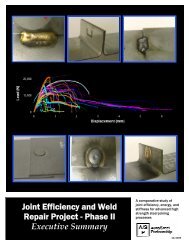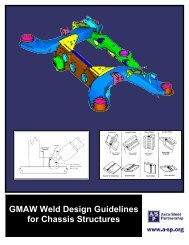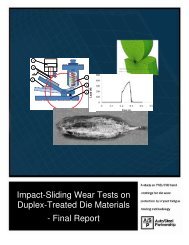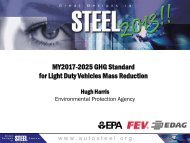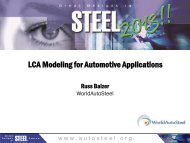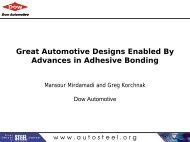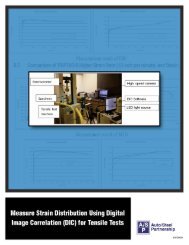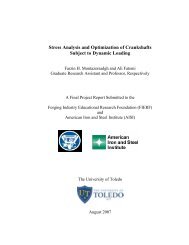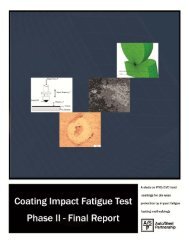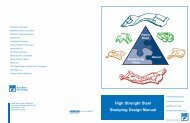Light Truck Frame Joint Stiffness Study Phase 1 Final Report
Light Truck Frame Joint Stiffness Study Phase 1 Final Report
Light Truck Frame Joint Stiffness Study Phase 1 Final Report
You also want an ePaper? Increase the reach of your titles
YUMPU automatically turns print PDFs into web optimized ePapers that Google loves.
LITERATURE SEARCH<br />
Introduction<br />
A literature search was performed to identify previous published papers on testing, finite element analysis<br />
and design guidelines for steel joints. The research is summarized below. Abstracts of the 43 articles that<br />
we identified as relevant and read, along with 12 additional articles that we judged not relevant and did<br />
not pursue, are included in the appendix.<br />
Two papers contained information on light truck frames and frame stiffness. The articles were written on a<br />
van frame structural evaluation (Hull, 1979) and an idealized truck frame design (Michejda, 1971). Both<br />
articles mentioned joint stiffness but provided very little detailed information about joint design or analysis.<br />
Much of the available automotive research focused on body joint design. There were many papers on<br />
welded joints used in construction trusses and offshore oil platforms (tube through tube joints) which<br />
provided valuable information on joint measurement and test fixtures.<br />
Defining the <strong>Joint</strong><br />
Studies from civil engineering structures focused extensively on structural (non-automotive) frames and<br />
joint stiffness and stress testing. These studies, however, included pertinent information regarding<br />
specimen size, constraints, loading and instrumentation. The length of the structure surrounding the joint<br />
interface should be sufficiently long to minimize the influence of the end conditions (Chiew, 1996), and<br />
sufficiently small to keep the surrounding structure from affecting the stiffness. The joint dimensions we<br />
used were based on the work of Rao et. al. 1983 and adhered to the following guidelines:<br />
• The test joints contained a finite amount of surrounding structure<br />
• All unique characteristics of the joints were included (i.e. local reinforcements, extended flanges,<br />
access and lighting holes)<br />
• Inclusion of surrounding structure was minimized to prevent joint stiffness value contamination<br />
• Standard dimensions containing identical amounts of structure were used, when possible, for<br />
comparison across joint types<br />
• <strong>Joint</strong> samples were removed from the frame structure to isolate their performance. To facilitate<br />
testing, joint boundaries were developed in the plane of the cross section of the crossmember and rail<br />
• Load and support plates were welded to the ends of the joint specimen for load application and<br />
restraint<br />
Our test samples adhered to the guidelines in the following manner:<br />
• <strong>Joint</strong>s were tested to evaluate the optimum length to incorporate the unique characteristics of the joint<br />
• We established boundaries 150mm from the joint interface to be used in all joint samples<br />
• The joints were removed from the surrounding frame structure at the established boundaries<br />
• ¾-inch end plates were welded to the joint for the constraining and load application fixture<br />
<strong>Report</strong>: A/SP-005-1 <strong>Light</strong> <strong>Truck</strong> <strong>Frame</strong> <strong>Joint</strong> <strong>Stiffness</strong> <strong>Study</strong> 6



